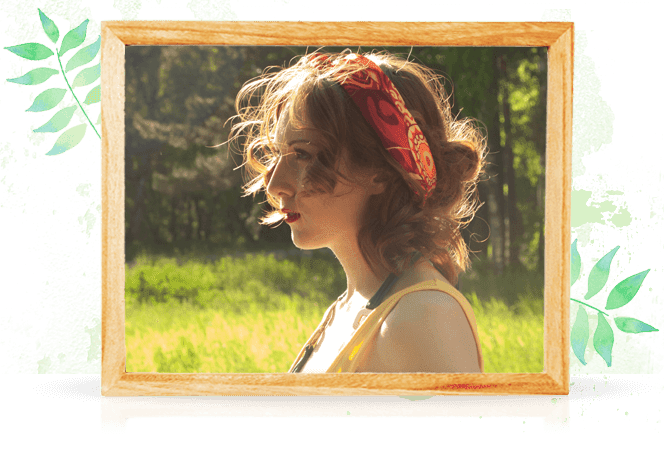Sunday in the park with George: A presentation
1. Introduction
Overview: Sunday in the Park with George is a musical by Stephen Sondheim and James Lapine that explores the struggles of artistic creation, the sacrifices made for one’s craft, and the lasting impact of art. Inspired by Georges Seurat’s painting A Sunday Afternoon on the Island of La Grande Jatte, the show is structured in two acts, each set a century apart.
Key Themes:
The Struggles of Artistic Creation – The musical explores the sacrifices artists make for their work, including personal relationships and emotional well-being. Georges Seurat's dedication to his art isolates him from those who love him.
Art vs. Life – The tension between pursuing artistic vision and engaging in personal relationships is central to the story. Dot loves Georges but cannot compete with his obsession with painting.
Legacy and Influence – The second act examines how art endures over time, questioning whether innovation is enough to leave a lasting impact. George, Seurat’s great-grandson, struggles to find meaning in his own work.
Perception and Innovation – Seurat’s pioneering pointillist technique was misunderstood in his time, reflecting how true innovation is often unappreciated until much later. Similarly, modern George struggles with the expectations placed on artists in a commercialized world.
Isolation and Human Connection – Both Georges and George struggle with feeling disconnected from others. Their search for meaning in art mirrors their longing for deeper personal connections.
Commercialization of Art – The second act critiques the modern art world, where success is often dictated by trends, funding, and public approval rather than artistic passion.
Time and Memory – The musical reflects on how art preserves moments in time. The past lingers in the present, as seen when Dot and other figures from Seurat’s life reappear in George’s journey.
"Order, Design, Composition, Balance, Light, and Harmony" – These artistic principles, repeated throughout the show, represent both the technical elements of painting and the broader search for structure and meaning in life.
2. The Storyline
Setting: The musical is set in two distinct time periods, each reflecting a different stage in the evolution of art and its impact on the people who create it. The first act takes place in 1884 on an island in the River Seine just outside Paris, where Georges Seurat is painting A Sunday Afternoon on the Island of La Grande Jatte. The setting is both literal and symbolic, capturing a tranquil yet meticulously structured scene of Parisian society while also representing the isolated world of the artist, who observes rather than participates. The second act shifts to 1984, primarily in an art gallery and later in the same location where Seurat once painted, now a historical site. This modern setting contrasts the artistic struggles of the past with those of the present, emphasizing the changing nature of art, its reception, and the challenge of maintaining creative integrity in a commercialized world.
Plot Summary: In Act 1, set in 1884, Georges Seurat is obsessed with perfecting his groundbreaking pointillist technique while painting A Sunday Afternoon on the Island of La Grande Jatte. His dedication to his art alienates those around him, especially his lover, Dot, who longs for his attention but ultimately leaves him for a more stable life in America. Despite personal sacrifices and a lack of recognition, Seurat completes his masterpiece, immortalizing the people and moments that surrounded him.
Act 2 takes place in 1984, where George, Seurat’s great-grandson and a contemporary artist, is struggling to find inspiration in an art world dominated by commercialism and technology. Searching for a connection to his past, he travels to the island where his ancestor once painted. There, the figures from the painting appear, including Dot, helping him rediscover his artistic purpose. The musical ends with George embracing the possibilities of creation, echoing his great-grandfather’s artistic vision.
3. Musical Elements
Score and Style: The score of Sunday in the Park with George is one of Stephen Sondheim’s most intricate and innovative works, reflecting both the meticulous technique of Georges Seurat’s pointillism and the emotional depth of the characters. Musically, it blends traditional lyricism with fragmented, almost painterly motifs that mirror Seurat’s precise brushstrokes.
In Act 1, the music is highly structured, often using short, overlapping phrases to capture the process of artistic creation. Songs like "Color and Light" showcase Seurat’s obsessive focus through staccato rhythms and layered harmonies, while "Finishing the Hat" is a deeply introspective piece that reveals his emotional isolation. The ensemble numbers, such as "Sunday in the Park with George", build gradually, much like the painting itself, as voices weave together to create a complex sonic landscape.
Act 2 shifts to a more contemporary sound, reflecting the modern art world. The music becomes more fluid and dissonant, emphasizing George’s creative frustration. "Putting It Together" satirizes the commercialization of art with a sharp, rhythmic drive, while "Move On" offers a moment of emotional clarity, encouraging the protagonist to embrace uncertainty in his work. The final reprise of "Sunday" brings both acts together, blending past and present in a moment of artistic transcendence.
Sondheim’s score, combined with James Lapine’s book, creates a unique theatrical experience where music and storytelling mirror the themes of art, legacy, and human connection.
Instrumentation and Orchestration: The orchestration of Sunday in the Park with George, originally arranged by Michael Starobin, is as innovative and intricate as Sondheim’s score, reflecting both the precision of Georges Seurat’s pointillist technique and the emotional depth of the story. The instrumentation is relatively small but highly detailed, featuring a mix of traditional orchestral elements and more contemporary textures. Strings, woodwinds, and brass provide warmth and lyrical beauty, while synthesizers and electronic elements add a modern edge, especially in Act 2. The orchestration often mirrors Seurat’s painting process, using short, staccato bursts of sound that layer and build, much like individual dots of color forming a complete image. One of the most distinctive aspects of the orchestration is its use of repeating, overlapping motifs to reflect Seurat’s meticulous brushwork. In songs like "Color and Light", the instrumentation is fragmented and precise, capturing his obsessive focus, while in "Sunday", the lush, swelling harmonies create a sense of unity and grandeur, mirroring the completion of his masterpiece. Act 2 introduces a more contemporary sound, incorporating sharper rhythms and more percussive elements, particularly in "Putting It Together", which satirizes the modern art world. However, the orchestration ultimately returns to the sweeping, ethereal quality of Act 1 in the finale, reinforcing the timeless nature of artistic creation.Choreography: The choreography in Sunday in the Park with George is not as central as in traditional dance-heavy musicals, but it plays a crucial role in shaping the movement and staging, particularly in how characters interact with Seurat’s artistic vision. Rather than featuring large dance numbers, the movement is often stylized, precise, and carefully structured to reflect Seurat’s methodical, pointillist approach to painting.
In Act 1, the blocking and movement of the ensemble mimic the careful placement of figures in the painting A Sunday Afternoon on the Island of La Grande Jatte. Characters frequently pose in static or deliberate, measured motions, as if they are gradually becoming part of the artwork. Their transitions between naturalistic movement and frozen tableau create a sense of the painting coming to life. During "Sunday in the Park with George", the cast assembles in the final positions of the painting in a breathtakingly choreographed moment of stillness and composition.
Act 2 takes a more contemporary approach, particularly in numbers like "Putting It Together", where movement is sharper and more dynamic, reflecting the fast-paced, commercialized art world. The staging often contrasts the structured, deliberate aesthetic of Seurat’s world with the frenetic energy of modern artistic spaces.
- Sunday in the Park with George, Dot and Georges Seurat
- No life - Jules, Yvonne
- Color and Light - Dot, Georges
- Gossip - Celeste 1 and 2, Boatman, Nurse, Old lady, Jules, Yvonne, Dot
- The Day off - Georges, Nurse, Frieda, Franz, Boatman, Company
- Everybody Loves Louis - Dot
- The One on the left - Soldier, Celeste 1 and 2, Georges
- Finishing the hat - Georges
- The day off (reprise) - Company
- We do not belong together - Dot, georges
- Beautiful - Old lady, georges
- Sunday - Georges, Company
- It's Hot up here - Dot, yvonne, louise, franz, nurse, Celeste 1 and 2, Frieda, Jules, Soldier, Old lady, boatman, louis
- Chromolume #7 - Orchestra
- Gossip (reprise) - Harriet, Billy, Bob, Charles, Betty, Alex, Naomi
- Putting it together - George, Marie, Bob, Harriet, Billy, Elaine, Charles, Naomi, Lee, Dennis, Betty, Alex, Blair
- Children and Art - Marie, George
- Lesson #8 - George
- Move On, George, Dot
- Sunday (reprise) - george, dot, company
4. Production History
Background : The idea for Sunday in the Park with George began in the early 1980s when Sondheim and director James Lapine were brainstorming for a new collaboration. The concept came from Sondheim’s fascination with the pointillist technique used by French painter Georges Seurat, particularly in his famous painting A Sunday Afternoon on the Island of La Grande Jatte. Sondheim was intrigued by Seurat’s obsession with detail, his dedication to his art at the expense of personal relationships, and the idea of time and perception in art. Lapine, who had previously collaborated with Sondheim on Into the Woods, was brought on board as the director, and together they began developing the musical’s concept.
Development:
The musical had its world premiere at the Playwrights Horizons theater in New York City in May 1984, a well-regarded Off-Broadway venue. It received positive early reviews for its innovative approach to storytelling and its unique blend of music, art, and history. The production was well-received, and this positive momentum helped the show move to Broadway.
- Off-Broadway production:
- Mandy Patinkin and Bernadette Peters
- July 1983 - 25 performances
- Only the first act was performed
- Leonard Bernstein wrote to Sondheim: "brilliant, deeply conceived, canny, magisterial and by far the most personal statement I've heard from you thus far. Bravo."
- Three performers did not make it to Broadway: Kelsey Grammer (soldier); Mary Elizabeth Mastrantonio (Celeste 2/Linda), and Christine Baranski (Blair/Clarisse => Yvonne)
- First Productions (1984 - 1985)
- Music and Lyrics: Sondheim
- Book: James Lapine
- the first Broadway show to utilise projection mapping and high powered lasers that broke the 4th wall
- Cast
- Georges: Mandy Patinkin (and Robert Westenberg, Cris Groenendaal, Harry Groener, Jeff Keller (u/s), Howard McGillin)
- Dot: Bernadette Peters (Betsy Joslyn, Maryann Plunkett)
- Old Lady: Barbara Bryne
- Jules: Charles Kimbrough (Jeff Keller)
- Yvonne: Dana Ivey
- A soldier: Robert Westenberg (Cris Groenendaal, Howard McGillin, Jeff Keller)
- The boatman: William Parry
- Nurse: Judith Moore
- Franz: Brent Spiner (Bruce Adler, Cris Groenendaal (u/s), Jeff Keller)
- Celeste 1: Melanie Vaughan (Betsy Joslyn)
- Celeste 2: Mary D'Arcy (Betsy Joslyn)
- Frieda: Nancy Opel
- Louis: Cris Groenendaal (Jeff Keller)
- Mr: Kurt Knudson
- Louise: Danielle Ferland
- Critical responses: "I do know... that Mr. Sondheim and Mr. Lapine have created an audacious, haunting and, in its own intensely personal way, touching work. Even when it fails—as it does on occasion—Sunday in the Park is setting the stage for even more sustained theatrical innovations yet to come." (Frank Rich, New York Times)
- May 15th 1994: tenth anniversary concert
List of Revivals and others productions
- Original London production - 1990
- George: Philip Quast (won the award for Best actor in a musical)
- Dot: Maria Friedman
- London Revival - 2005
- George: Daniel Evans
- Dot: Anna-Jane Casey (then Jenna Russell)
- Direction: Sam Buntrock
- Set and costume: David Farley
- New orchestration: Jason Carr
- Won five olivier award
- Broadway Revival - 2008
- From the 2005 London production so:
- George: Daniel Evans (tony award)
- Dot: Jenna Russel (tony award)
- Direction: Sam Buntrock
- Jules/bob: Michael Cumpsty
- Yvonne/Naomi: Jessica Molaskey
- Mr/Charles Redmond: Ed Dixon
- Old Lady/Blair: Mary Beth Peil
- Boatman/Dennis: Alexander Gemignani
- Franz/Lee: David Turner
- Broadway Revival - 2017
- Four-performance concert as part of New york city center's 2016 gala.
- George: Jake Gyllenhaal
- Dot/Marie: Annaleigh Ashford
- Then a limited-run revival was presented on Broadway based on the concert's reception
- Mr/Charles: Brooks Ashmanskas
- Boatman/Lee: Philip Boykin
- Soldier/Alex: Claybourne Elder
- Mrs/Harriet: Liz McCartney
- Frieda/Betty: Ruthie Ann Miles
- Franz/Dennis: David Turner
- Louis/Billy: Jordan Gelber
- Yvonne/Naomi: Erin Davie
- Old Lady/Blair: Penny Fuller
- Jules/bob: robert sean leonard
- Director: James Lapine's niece Sarna Lapine
- Others:
- Eisenhower Theatre - 2002
- As part of the Kennedy Center Sondheim Celebration
- Directed: Eric D. Schaeffer
- Georges: Raul Esparza
- Dot/Marie: Melissa Errico
- Original broadway cast member Cris Groenendaal: Jules/Bob
- Chicago Shakespeare Theatre - 2002
- Directed: Gary Griffin
- George: Jason Danieley
- Dot: Carmen Cusack
- Old Lady: Linda Stephens
- Ravinia Festival - 2004
- Georges: Michael Cerveris
- Dot/Marie: Audra McDonald
- Yvonne/Blair: Patti LuPone
- Seattle's 5th avenue theatre - 2009
- Georges: Hugh Panaro
- Dot/Marie: Billie Wildrick
- Yvonne/Naomi: Patti Cohenour
- Harriet: Anne Allgood
- Bob: Allen Fitzpatrick
- Théâtre du Chatelet - 2013
- Directed: Lee Blakeley
- George: Julian Ovenden
- Dot/Marie: Sophie-Louise Dann
- Michael Starobin reworked his musical arrangments from 11-piece chamber orchestra to a full orchestra
- Pasadena Playhouse - 2023
- 2017 Broadway revival production
- same production team
- Georges: Graham Phillips
- Dot: Krystina Alabado





Aucun commentaire:
Enregistrer un commentaire